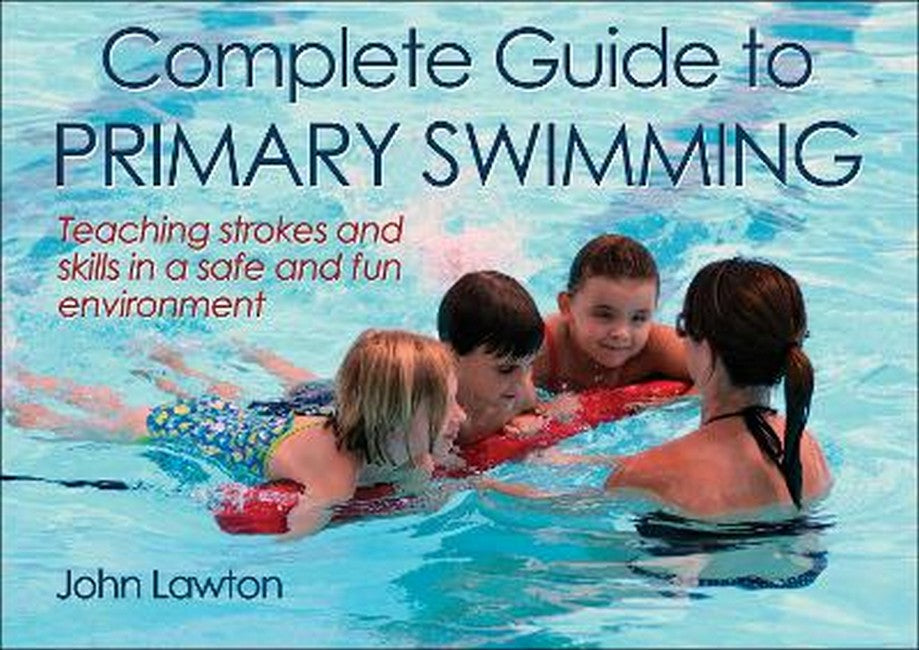John Lawton is an ASA advanced swimming teacher and ASA coach. He has been teaching swimming since 1967 and has worked extensively training and supporting primary school teachers. Lawton has authored and edited numerous ASA teaching publications and written articles for ASA's Swimming Times. He also was heavily involved with the Swim for Life campaign that lobbied the government to ensure that swimming became a compulsory aspect of the primary school curriculum. Lawton served for 14 years as director of education for ASA, England's national governing body for the sport of swimming. Since 2006, he has run his own sport education consultancy, and he is the editor of a publication aimed at teaching swimming to people with physical and learning disabilities. He earned an MSc degree from Loughborough University in physical education and sports science.
Request Academic Copy
Please copy the ISBN for submitting review copy form
Description
Unit 1. Planning Outcome Developing a Whole-School Approach Organisation and Delivery Health and Safety Who Can Teach Swimming? Additional Adult Support Teaching From the Poolside or in the Water Working Effectively With a Group Evaluating Your Programme and Planning for the Future Looking Beyond the School Day Where to Start: A Few Guiding Thoughts Developing Your Whole-School Swimming Guidance Document Unit 2. Preparation and Familiarisation Outcomes Linking to the National Curriculum Requirements Outcome 2.1: Be aware of the processes and procedures related to attending a swimming lesson and have the opportunity to clarify any concerns. Outcome 2.2: Be introduced to the pool environment and the teaching staff. Outcome 2.3: Complete a land-based evacuation procedure. Preswimming Checklist Worksheet 1: Let's Think About Swimming Unit 3. Starting to Move Outcomes Linking to the National Curriculum Requirements Outcome 3.1: Know and be able to explain the safety requirements of the pool as appropriate to the lesson. Outcome 3.2: a. Be able to enter and exit the water safely; be able to move around the pool with feet on the bottom and with confidence. b. Be able to carry out evacuation procedures safely and within an appropriate length of time. Outcome 3.3: Be comfortable participating in various games and fun ativities related to early movement. Unit 3 Checklist Worksheet 2: Pool Safety Unit 4. Face in the Water Outcomes Linking to the National Curriculum Requirements Outcome 4.1: Be comfortable putting the face in the water. Outcome 4.2: a. Be introduced to the initial stage of aquatic breathing and be comfortable with water in the mouth. b. Be introduced to the benefits of exercise. Outcome 4.3: Be introduced to aspects related to water safety away from the pool environment. Unit 4 Checklist Unit 5. Learning to Float Outcomes Linking to the National Curriculum Requirements Outcome 5.1: Be comfortable floating on the front and back, and be able to regain the standing position. Outcome 5.2: Be able to combine floating on the front and back showing rotation and balance, and be able to develop floating sequences. Unit 5 Checklist Unit 6. Submersion and Aquatic Breathing Outcome Linking to the National Curriculum Requirements Outcome 6.1: Be comfortable going under the water and be able to show controlled inhalation and exhalation over a period of time. Unit 6 Checklist Unit 7. Gliding and Developing the Body Position Outcomes Linking to the National Curriculum Requirements Outcome 7.1: Be able to glide on the front with the face in the water and the arms at the sides and extended, and be able to float on the back with the arms at the sides. Outcome 7.2: Be able to glide on the front and the back combined with kicking and rotation. Outcome 7.3: Be able to glide on the back combined with kicking and with sculling action. Unit 7 Checklist Unit 8. Developing Backstroke and Front Crawl Outcomes Linking to the National Curriculum Requirements Outcome 8.1: Be able to swim on the back withi the legs kicking up and down and the arms performing an alternating over-the-water recovery. Outcome 8.2: Be able to swim on the front with the legs kicking up and down and the arms performing an alternating over-the-water recovery. Outcome 8.3: Be able to perform a number of additional aquatic skills appropriate to this stage of development. Outcome 8.4: Describe each stroke covered in this unit, and suggest ways to bring about improvement. Unit 8 Checklist Unit 9. Developing Breaststroke and Butterfly Outcomes Linking to the National Curriculum Requirements Outcome 9.1: Perform a basic breaststroke with control. Outcome 9.2: Perform a basic butterfly with control. Outcome 9.3: Be able to perform a number of additional aquatic skills appropriate to this stage of development. Unit 9 Checklist Unit 10. Further Development of the Four Major Strokes and Aquatic Skills Outcomes Linking to the National Curriculum Requirements Outcome 10.1a: Swim backstroke over longer distances showing good control. Outcome 10.1b: Swim front crawl over longer distances showing good control. Outcome 10.1c: Siwm breaststroke over longer distances showing good control. Outcome 10.1d: Swim butterfly over longer distances showing good control. Outcome 10.2: Be able to combine strokes and skills to perform aquatic circuits. Unit 10 Checklist Further Development

